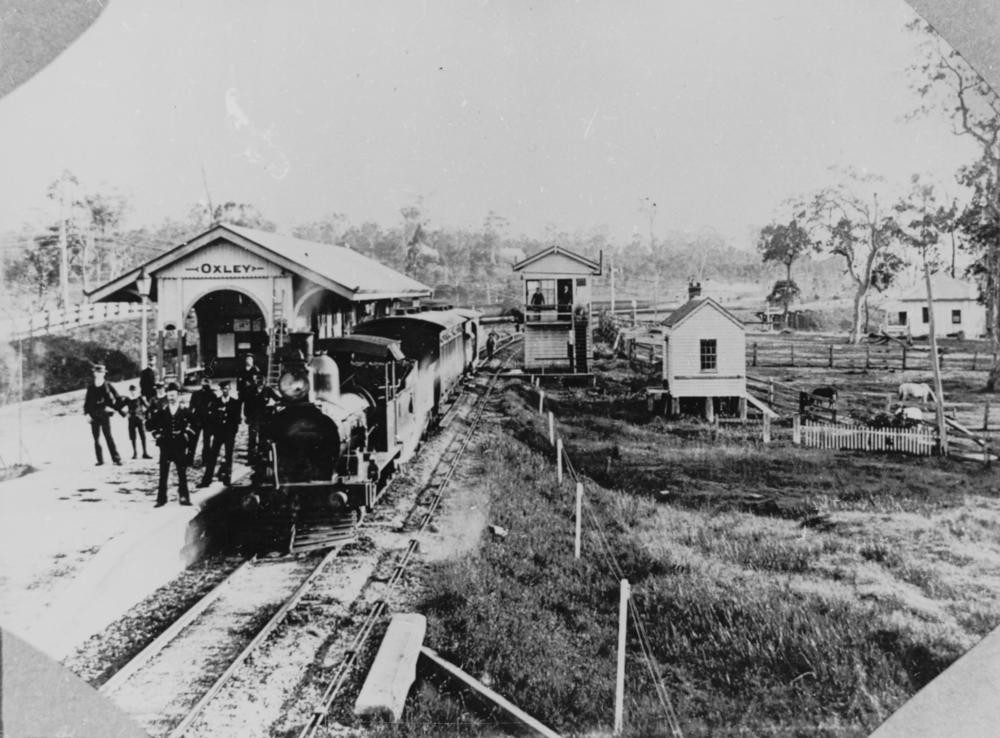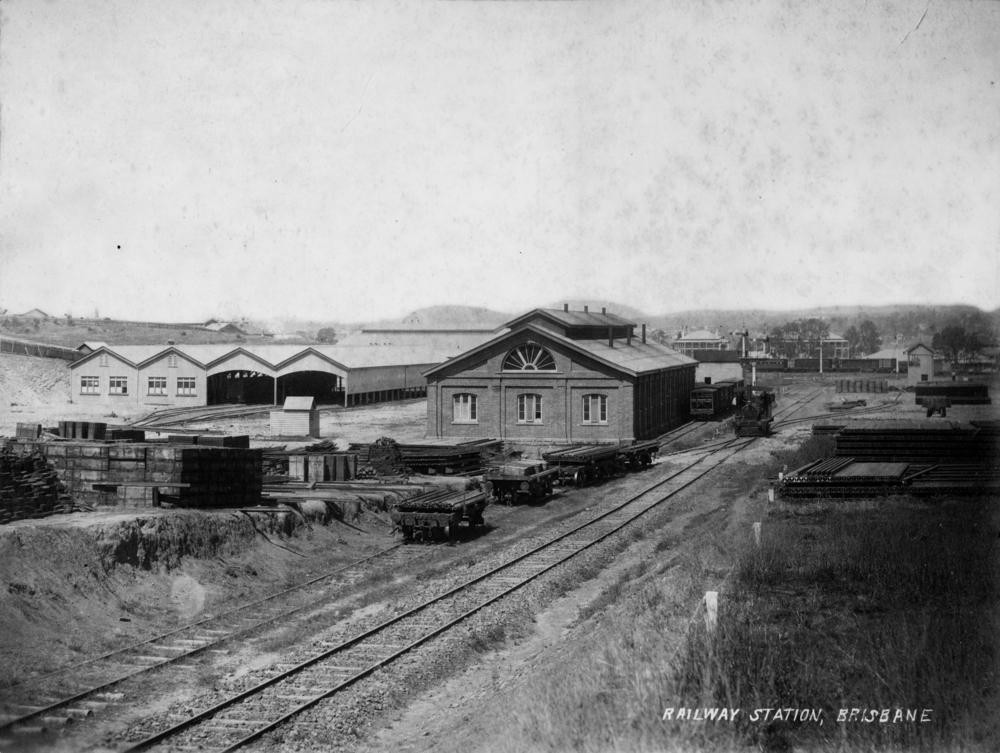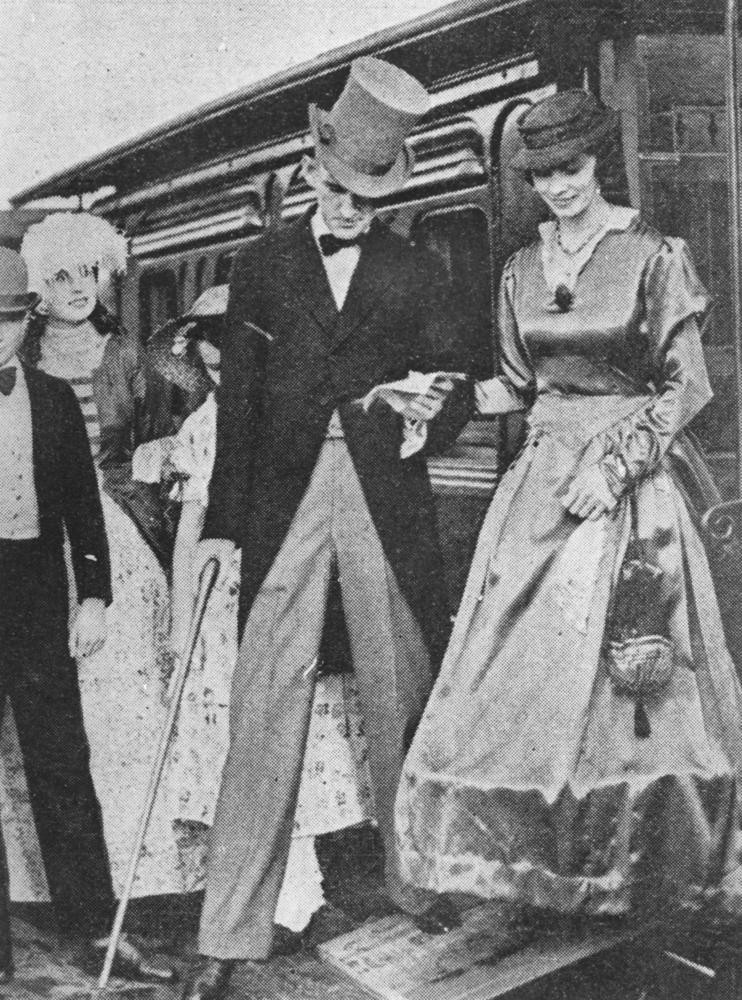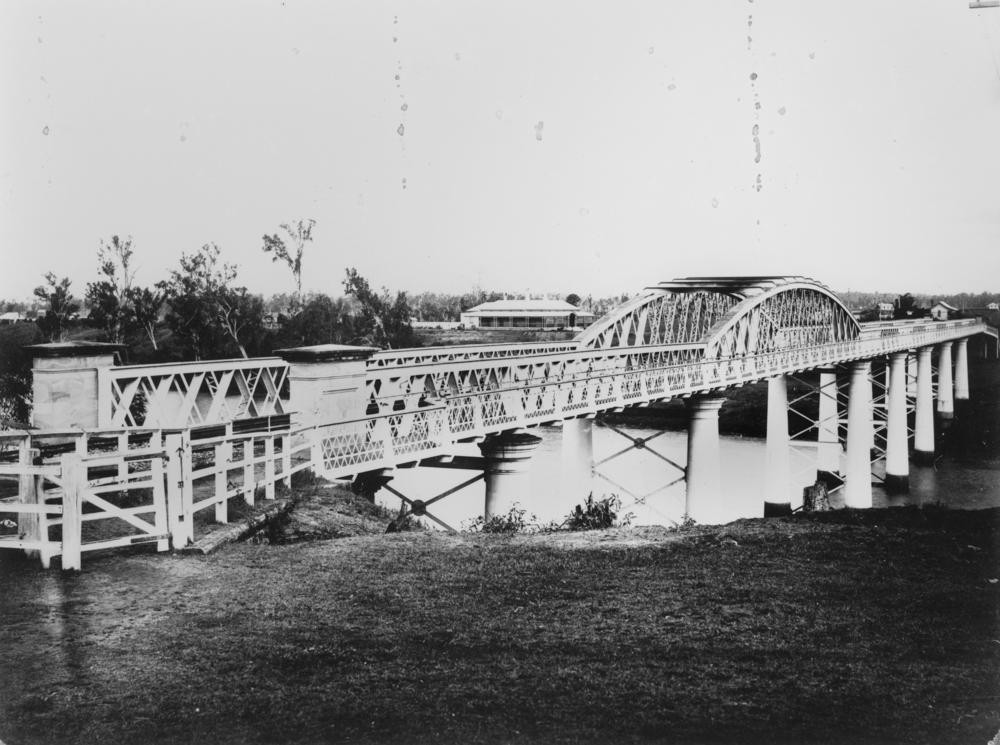The railway comes to Brisbane
By Simon Miller, Library Technician, State Library of Queensland | 14 June 2015
The first railway in Queensland ran from Ipswich to Grandchester and opened in 1865. The line was extended through Toowoomba, reaching Dalby in 1868. A southern branch to Warwick was opened in 1871 and Rockhampton had a line as far as Westwood in 1867. Brisbane, on the other hand, did not have it's first train until 1875 and then it only ran as far as Indooroopilly with passengers and freight having to be ferried across the Brisbane River until the Albert Bridge was completed a year later.
Although a route had been surveyed even before Separation, Brisbane simply did not have enough political clout to get priority. The Brisbane line was only approved in 1872 and the parliament had to approve an extension to the Rockhampton line at the same time to get support. Even then the Brisbane line was only initially approved as far as Oxley with the first section from Ipswich to Oxley West, now named Sherwood, opened on 5 October 1874 with no ceremony.

Steam engine at Oxley Railway Station, 1876
From January 1875 trains were extended to Oxley Point where the bridge was under construction and the section from Brisbane to Indooroopilly was opened on 14 June 1875, again without ceremony. This event was looked forward to in a somewhat mocking and sarcastic article in The Queenslander on 12 June.
It is officially and authoritatively announced by advertisement that this portion of the line will positively be opened for passenger and special goods traffic on Monday next, so that the citizens of Brisbane are at length to be deprived of the pleasant speculation whether they would live to see the locomotive in this city. Although no special festivities are to mark the inauguration of this portion of our railway system, which, like poor Ophelia's funeral, is only accorded "marred rites," the first train will no doubt be thronged with pleasure-seekers. For the transit of passengers across the Brisbane River, a covered punt is provided, so that in wet weather the victims will be able to enjoy not only a thorough drenching while traversing the approaches on either bank, but will be indulged with a soak-pen for softening their yolk.

Brisbane Railway Station, ca. 1876
The opening of the line on Monday 14 June 1875 was evidently well attended despite there being no official ceremony. The event was reported in The Queenslander of 19 June 1875.
The first train carrying passengers from the Brisbane terminus started at half-past 6 o'clock Monday morning, and, in spite of the earliness of the hour, a number of persons had assembled on the platform to witness this historical event. The four departures during the day were unattended with any demonstration, except that numbers of well-dressed people, evidently holiday-making on their own account, thronged the platform and skirted the adjacent parts of the line to see the trains move off. After 4 o'clock, when the schools and offices were out, the throng was greatly increased from these sources, and a short time before the last down-train arrived the station presented a very animated appearance, a long line of laden ballast-trucks being run slowly into the station, while the navvies on them worked furiously to discharge the stone between and beside the sleepers and rails.

Fashionably attired gentleman assists lady to alight from Brisbane's first railway carriage
The trains ran at good speed on each trip, showing that the line, though by no means in apple-pie order, is safe and fit for travel, while every day will bring it nearer perfect completion. Nothing could less resemble a gala opening than the preparations of Monday. Everything was makeshift; the platform at Brisbane half unpaved, the rooms and corridors incomplete, the roofing over the platform in progress merely, and the place lit up as evening fell by improvised rows of gas jets fixed in tubes temporarily supported by wooden gallows. Still, on the principle of half a loaf being preferable to no bread, the travelling public may be congratulated on being at length able to reach Brisbane by a railway, even in its present condition very much preferable to the old order of things.
Indeed the only ceremony that seems to have taken place for the inauguration of this important rail link was the naming of the Indooroopilly railway bridge in July 1876 which finally enabled an uninterrupted rail journey from Brisbane all the way to Dalby. This ceremony was described in the Darling Downs Gazette and General Advertiser of 8 July 1876.
After passing the Indooroopilly station, the train was run over the bridge and back again as far as the 160-feet span, where it had been arranged that the ceremony should take place, and where a portion of the bridge had been decorated for the occasion with festoons of evergreens. Here His Excellency and party alighted from the carriage, and were received by Mr. A. Thomas, Resident Engineer of the Southern and Western Railway. The gentleman who has had charge of the works throughout, and who has brought to so successful a conclusion the construction of this bridge, was unfortunately absent, as he was suffering severely from the effects of a fall from his horse, received some days ago. Mr. Thomas having requested His Excellency to name the bridge, The Governor, taking in his hand a bottle of champagne, suspended from the top of one of the girders, broke it against the bridge, giving it at the same time the name of the Albert Bridge. He said it gave him great satisfaction to have been present to declare this bridge open.

The Albert Bridge across the Brisbane River at Indooroopilly
The engineers and politicians responsible for the construction of the bridge had the foresight to build the capacity for a double track, a precaution which proved fortuitous when the Brisbane to Ipswich line became the first track in Queensland to be duplicated due to the large amount of traffic that it carried. The duplication of the line being completed in 1887. Unfortunately this first bridge was washed away in the disastrous floods of 1893 and had to be replaced.
We will be exploring many aspects of the history of railways in Queensland in a discussion with Greg Hallam, Historian at Queensland Rail and Dr Geraldine Mate, Senior Curator, Transport and Energy at The Workshops Rail Museum, in conversation with Ian Townsend from ABC Radio National as part of our Night in the JOL series on Tuesday 16 June 2015 at 6 pm.
Simon Miller - Library Technician, State Library of Queensland
Comments
Your email address will not be published.
We welcome relevant, respectful comments.